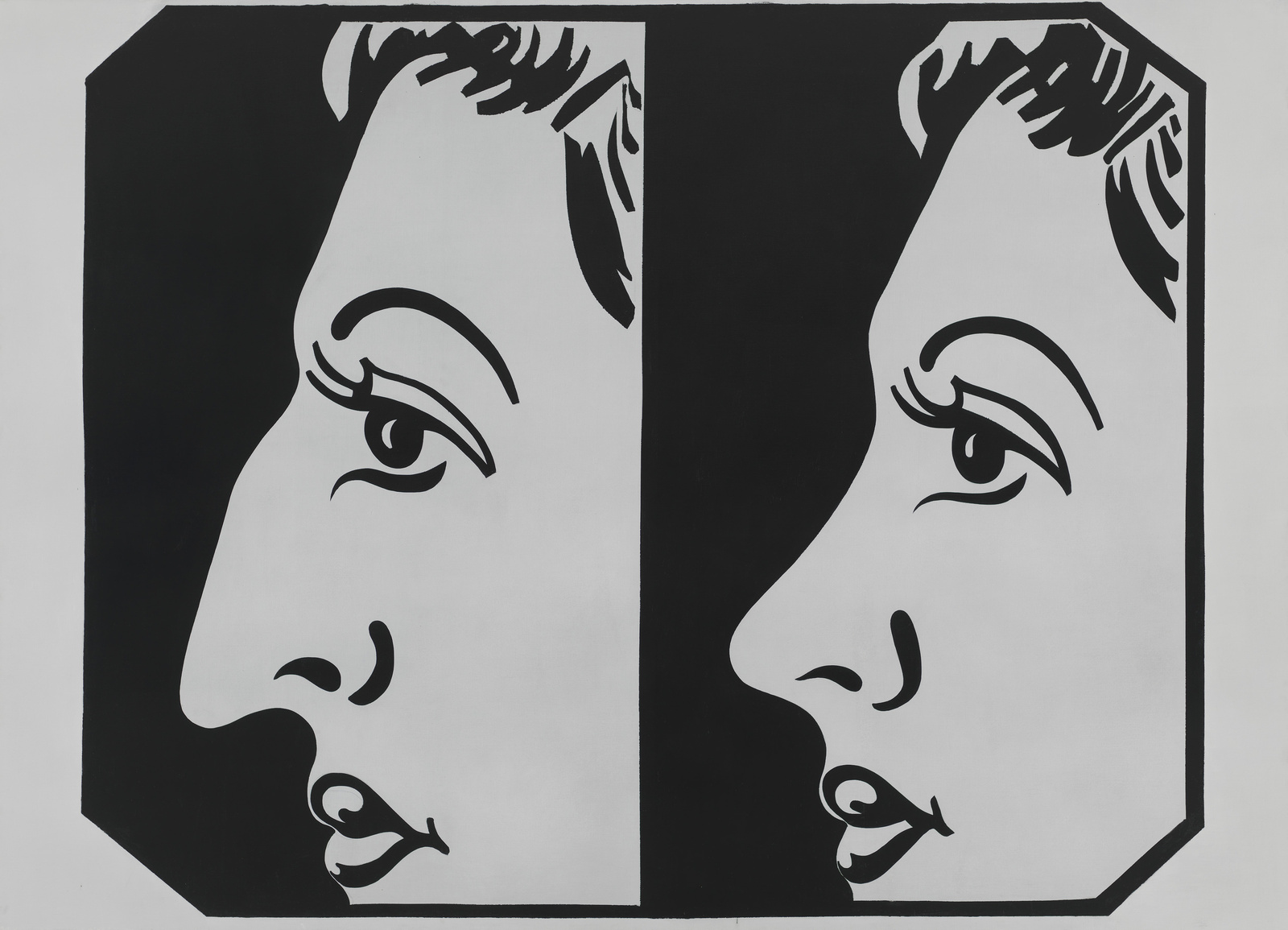Not on view
Date
1962
Classification
Paintings
Medium
Acrylic and graphite pencil on linen
Dimensions
Overall: 72 1/8 × 99 3/4in. (183.2 × 253.4 cm)
Accession number
71.226
Credit line
Whitney Museum of American Art, New York; purchase, with funds from Charles Simon
Rights and reproductions
© The Andy Warhol Foundation for the Visual Arts, Inc. / Licensed by Artists Rights Society (ARS), New York
Visual description
This painting by Andy Warhol is entitled Before and After [4], and was created in 1962. It is a large linen canvas, measuring eight and a half feet wide by six feet tall—about the size of a king mattress. Warhol made the work using acrylic paint and graphite pencil. The only colors are a soft, light gray that makes up the background, and a dark, solid black used to depict the forms. As a result of stark contrast between the two colors, the work looks like a print or a lithograph. In fact, Warhol based it on plastic surgeon’s ad in the back of the National Enquirer.
As the title suggests, the image is divided into two halves: a before, and an after. Each half contains the same woman’s face in profile, looking towards the left side of the canvas. In both images, black lines denote her features—a single eye and eyebrow, her mouth, and her nose. Her eyelashes curl upward perfectly, as if covered in mascara; the eyebrows are shaped into skinny arches; and the lips are plump and shiny, as they would be when lipstick is applied.
The only difference between the two panels is the size of the woman’s nose. In the panel on the left, the woman’s nose is large, curved, and long. In the right-hand panel, the nose is small, dainty, and slightly upturned. Looking at these panels, Warhol’s title becomes much clearer. These are the before and after images of a nose job.
Audio
-
0:00
Before and After [4], 1962
0:00
Narrator: Warhol basó esta pintura en un anuncio de cirugía plástica de nariz que encontró en las últimas páginas del National Enquirer.
Deborah Kass: Descubrí a Andy en la sección dominical de “Arte y entretenimiento” del Times, en los sesenta, cuando yo tenía alrededor de trece años. Vi su pintura Before and After y quedé fascinada por completo.
Narrator: Artista Deborah Kass.
Deborah Kass: Sabía que quería ser artista y que esa era la sección de arte. Sin embargo, esta fue una de las primeras obras de arte con la que en verdad me pude relacionar. No sabía cuál era la intención del artista, de Andy Warhol; no sabía lo que tenía en mente, pero conocía a personas con cirugía plástica en la nariz. Y sucede que todas eran judías. Por tanto, mi pregunta fue, en mi mente pequeña de adolescente, ¿acaso era una obra contra los judíos? En realidad, no me importaba porque hablaba sobre algo que en verdad yo entendía, algo sobre mi propia experiencia.
Jamás me había sucedido algo así al ver una obra de arte. Mujeres bonitas o mujeres siendo torturadas o asesinadas o simplemente mujeres posando, esos eran los temas a lo largo de la historia del arte. Eso no era nuevo, lo nuevo es que reflejaba una experiencia que me era conocida.
Narrator: Aunque veladamente, esta es una de las obras más autobiográficas de Warhol. Refleja con humor e ironía la presión que sentía por asimilarse. Él mismo se había sometido a una cirugía plástica de nariz y había eliminado la “a” en su apellido, Warhola, porque sentía que revelaba claramente sus orígenes de inmigrante.
-
0:00
Verbal Description: Before and After [4], 1962
0:00
Narrator: This painting by Andy Warhol is entitled Before and After [4], and was created in 1962. It is a large linen canvas, measuring eight and a half feet wide by six feet tall—about the size of a king mattress. Warhol made the work using acrylic paint and graphite pencil. The only colors are a soft, light gray that makes up the background, and a dark, solid black used to depict the forms. As a result of stark contrast between the two colors, the work looks like a print or a lithograph. In fact, Warhol based it on plastic surgeon’s ad in the back of the National Enquirer.
As the title suggests, the image is divided into two halves: a before, and an after. Each half contains the same woman’s face in profile, looking towards the left side of the canvas. In both images, black lines denote her features—a single eye and eyebrow, her mouth, and her nose. Her eyelashes curl upward perfectly, as if covered in mascara; the eyebrows are shaped into skinny arches; and the lips are plump and shiny, as they would be when lipstick is applied.
The only difference between the two panels is the size of the woman’s nose. In the panel on the left, the woman’s nose is large, curved, and long. In the right-hand panel, the nose is small, dainty, and slightly upturned. Looking at these panels, Warhol’s title becomes much clearer. These are the before and after images of a nose job.
-
0:00
Before and After [4], 1962
0:00
Narrator: Warhol based this painting on an ad for nose jobs that he found in the back pages of the National Enquirer.
Deborah Kass: I first discovered Andy in the Arts and Leisure section of the Sunday New York Times when I was around thirteen. In the sixties. I saw his painting Before and After and it totally blew my mind.
Narrator: Artist Deborah Kass.
Deborah Kass: I knew I wanted to be an artist and that was the art section. But this was one of the first works of art I had ever seen that I could actually relate to. I wasn’t sure what his intention was, the artist Andy Warhol, I didn't know what he had in mind. But I knew people with nose jobs. And they all happen to be Jewish. So my question was, was this, sort of in my little adolescent head, was this painting bad for the Jews? I actually didn't care because it just spoke about something I actually understood, something from my own experience.
That had never happened looking at a piece of art. Pretty women, or women being tortured, or women being murdered, or women just posing, was what most art history was about. That wasn't news. What was news is that it reflected an experience I was familiar with.
Narrator: In a veiled way, this is one of Warhol’s most autobiographical works, reflecting—with humor and irony—the pressure he felt to assimilate. He himself had his nose thinned, and dropped the “a” in his family surname, Warhola, because he felt it revealed his immigrant origins too clearly.
-
0:00
July 24, 2015
Donna De Salvo on Before and After, 4 by Andy Warhol0:00
-
0:00
Andy Warhol, Before and After, 4, 1962
0:00
Donna De Salvo: I’m Donna De Salvo, Chief Curator and Deputy Director for Programs at the Whitney Museum of American Art.
This is a work by Andy Warhol called Before and After, 4. It was made in 1962. It’s one of a series of works that Warhol made, which are based on an image for nose surgery that appeared in The National Enquirer.
Warhol, we know, actually had surgery on his nose in the late 1950s, and was also very self-conscious about his own appearance. On another level, this work really speaks to the fundamental notion of American assimilation. Warhol understood the power of consumption, and how we fit in by consuming. And to the extent that one can even think about buying a new nose.
Narrator: The way Warhol painted this work dovetails with its subject.
Donna De Salvo: He wanted to achieve what he said was an art that could be “noncommittal and anonymous.” And if one looks at this work, the evidence of the hand is extremely limited. Of course we know Warhol, by ’62, became someone who used photography, and used silkscreen to make his paintings, and moved away from this kind of hand-painted image.
So the combination of the kind of anonymity one might see, or the fitting in that this kind of nose change could imply is certainly in keeping with the actual removal of the hand that Warhol pursued in the making of these pictures.
Exhibitions
-
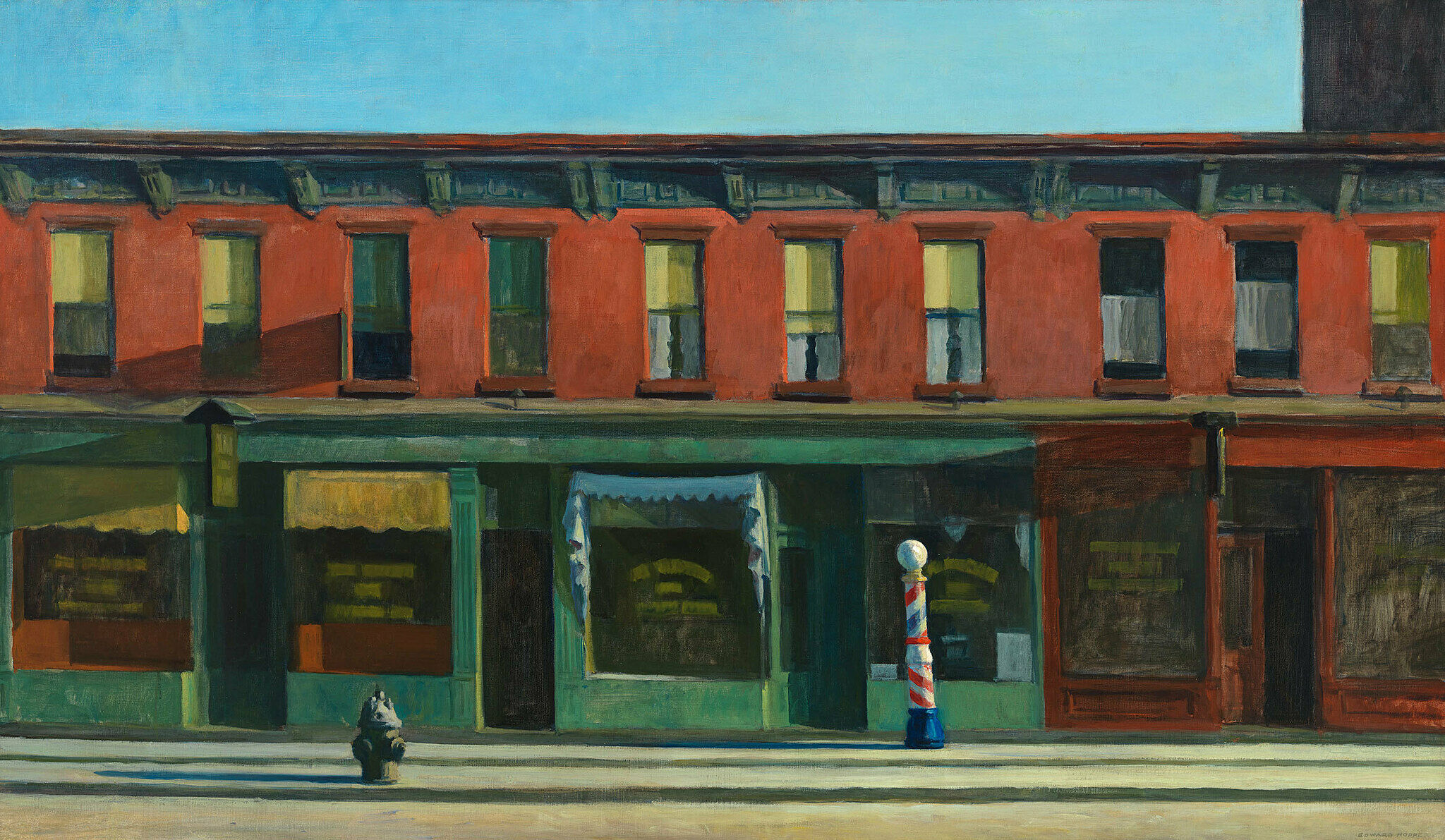
The Whitney’s Collection: Selections from 1900 to 1965
June 28, 2019–May 1, 2025
-
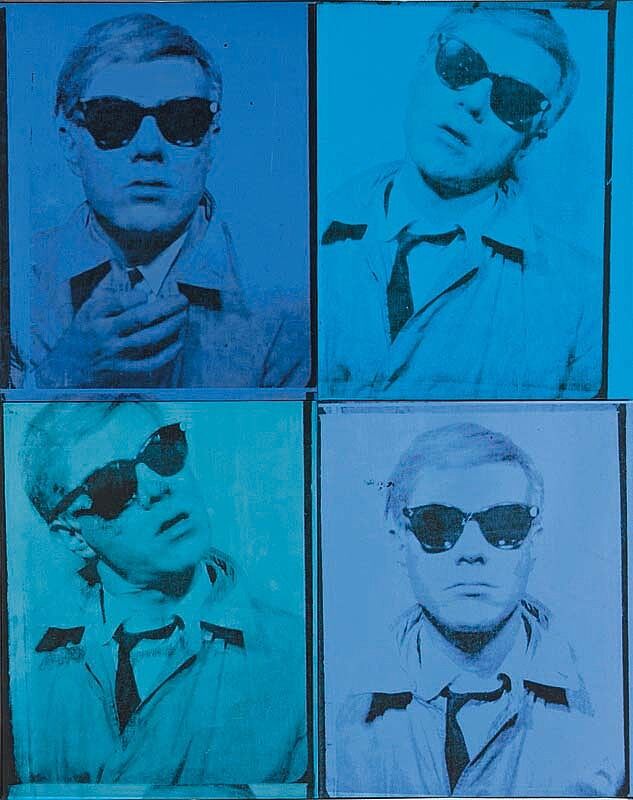
Andy Warhol—
From A to B and
Back AgainNov 12, 2018–Mar 31, 2019
-

America Is Hard to See
May 1–Sept 27, 2015
-
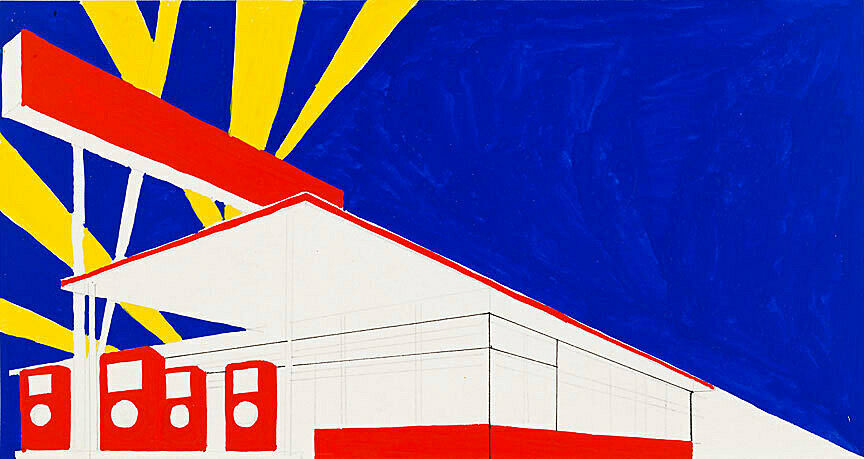
Shaping a Collection: Five Decades of Gifts
July 17–Oct 19, 2014
-
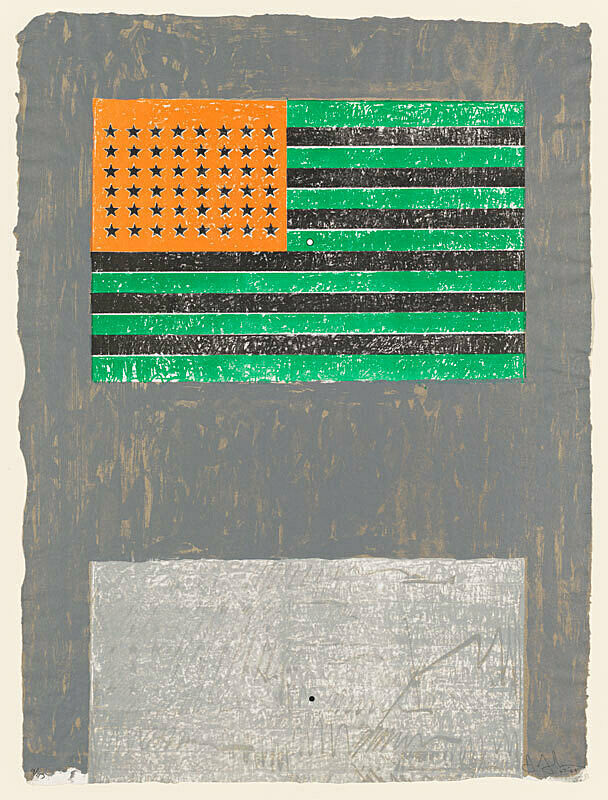
Sinister Pop
Nov 15, 2012–Mar 31, 2013
-
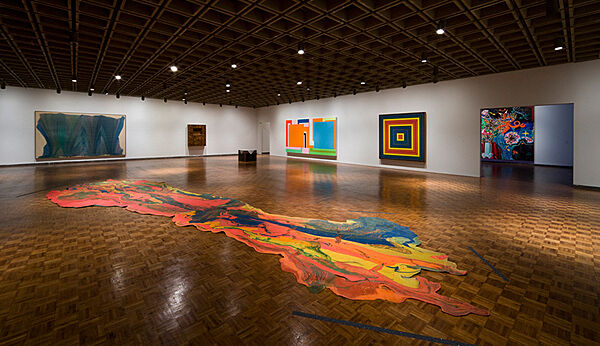
Synthetic
Jan 22–Apr 19, 2009
-
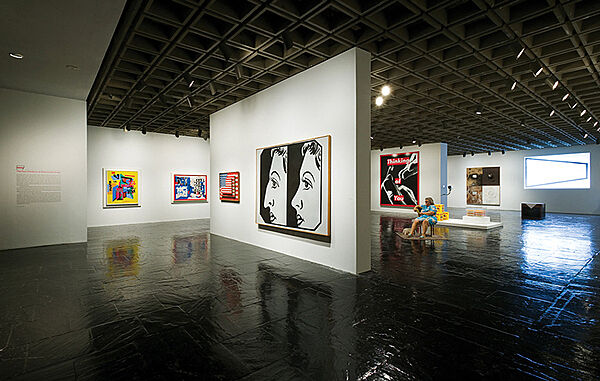
Full House: Views of the Whitney’s Collection at 75
June 29–Sept 3, 2006
-
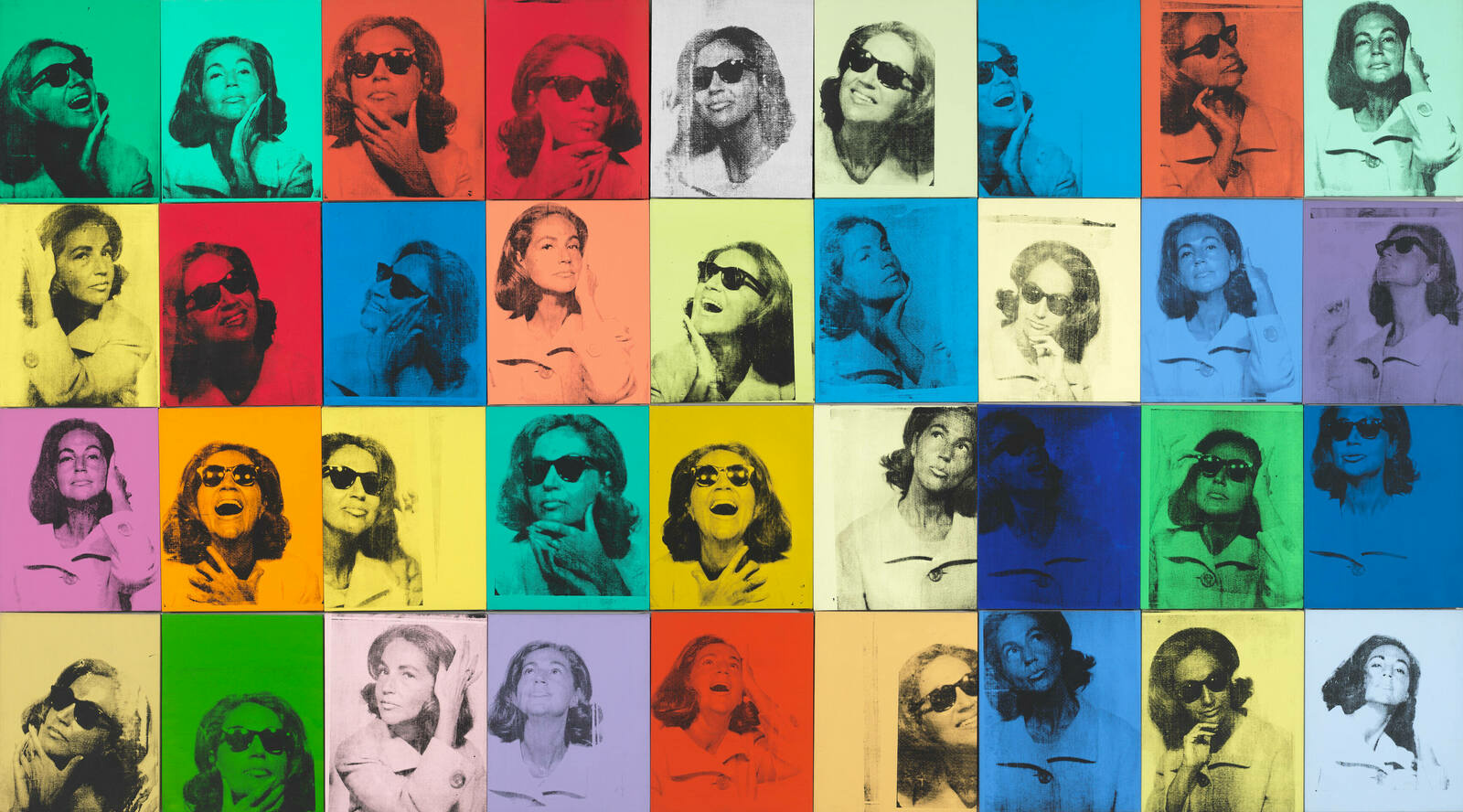
Pop/Concept: Highlights from the Permanent Collection
July 1–Oct 24, 2004

